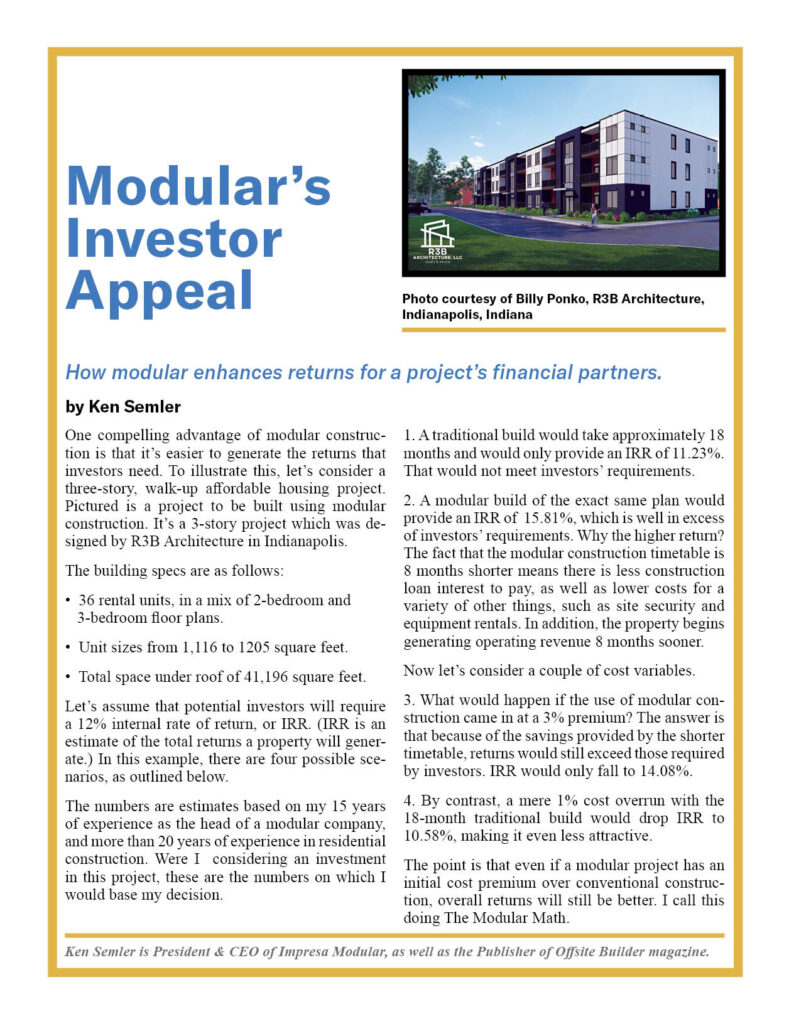The many ways in which modular’s time savings equals financial gain for project owners.
- Shorter project time means fewer problems, more revenue, less interest paid, lower labor costs, the elimination of weather delays and reduced exposure to material price increases.
- To realize these benefits, however, the project design must be a good fit for modular construction. Not all are.
- The most successful projects will also have a team in place that understands how to capitalize on the accelerated project schedule.
In modular construction, single-family and multifamily homes, as well as commercial properties, are built offsite (typically indoors to eliminate weather-related delays), then delivered to a site and set on a foundation. The building’s components — cabinets, flooring, drywall, painting, trim, etc. — can be installed at the same time as the site work is being completed, rather than sequentially. This saves countless hours.
“Not only am I doing the work faster indoors, with better quality and hopefully more energy efficiently, I’m also doing simultaneous work and compressing the work schedule,” says Ken Semler, President and CEO of Impresa Modular, a manufacturer based in Martinsburg, West Virginia. (Note: Ken Semler also serves as Publisher of Offsite Builder.)
But while saving time with modular construction is appealing, some property owners and developers might be left wondering if time saved translates into money saved.
As it turns out, yes. The hours, days and months that modular construction can knock off a project could generate a significant cost savings. Here’s how.
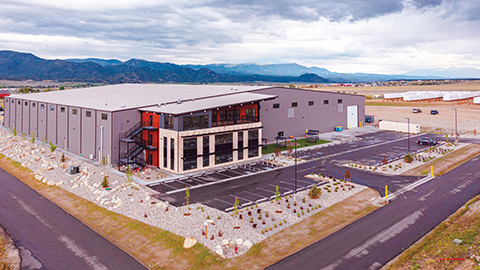
Photo credit: Fading West
Less Time for Costs to Accrue
As Semler acknowledges, “Speed to completion has monetary value.” There are a couple of reasons for this.
For one thing, there is less time for costly mishaps. Take a 192-room hotel project, for example. A traditional build could take 18 months to complete; a modular plan, however, could shorten construction time by a year, so that the project is finished in six months.
“With extra time there’s always a risk of extra cost,” Semler said. “Whenever I’m on a project longer than expected, bad things happen. I don’t make more money. Instead, when a project goes on longer, something leaks, someone breaks something, somebody steals something and those things continue to increase the cost.”
Additionally, completing a project 12 months ahead of schedule allows the property owners to get the building occupied that much sooner. A finished modular project gives an owner the opportunity to begin generating revenue during the months when a traditional build would still be under construction. So, even if a traditionally constructed project and a modular one had similar costs, the latter comes off as the better deal.
Time savings can also reduce loan interest paid. “When you accelerate the construction period, you save on the interest-only expense [of a construction loan],” says Rachel Lee, Principal at Kairos Asset Strategies, a real estate consulting company based in Indianapolis, Indiana. “Your loan interest costs are shortened compared to a conventional build.” She says that the owner may also get better terms when refinancing to a permanent loan, because the units are being leased sooner.
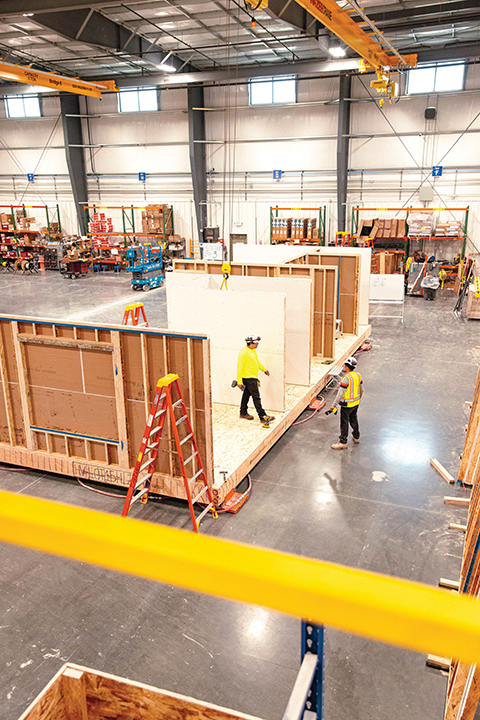
Labor and Material Savings
Labor will always be one of a project’s biggest costs, whether it’s a traditional or a modular build. That’s another way the shortened timeline modular offers could potentially lead to financial gain. The less time a crew is working on a project, the less money is spent on labor.
An additional modular advantage is that most of the construction is done inside, providing perfect conditions from a weather standpoint. The elimination of weather delays makes it more likely that the project will be completed on time, if not ahead of schedule.
The indoor working environment is safer for workers and better for materials, too and crews have a place to store modules until it’s time to ship them.
Materials are often purchased as commodities, so all teams know in advance how much lumber, metal, plumbing, etc. they need. This minimizes waste. “You’re buying everything upfront, and there are fewer change orders,” Lee says. “When buying upfront you eliminate your exposure to material price increases, because wait times for delivery are shorter.”
Some contractors who haven’t tried modular worry about the cost of cranes and over-the-road transportation. Lee says that while this is understandable, it’s important to look at overall project cost. “The savings on your material and labor offset what you pay for the crane and the transportation,” she says. “The [financial] effect is really net zero, breakeven or a slight premium (maybe five or six percent) for modular.” If there is a small premium, that should be more than offset by the time savings.
Of course, in order to realize these benefits, the project must be one that makes sense for modular. “If the site and the design and the use are a good fit, then it’s a no-brainer,” says Lee. “That’s why hotels are such a great fit.”
Another risk that’s mitigated by the factory environment is the risk that financial partners assume for materials and the building components. The fact that materials are stored inside before use, and that completed modules are fully protected from the weather, should give lenders and investors who are still unsure about this building method peace of mind.
Semler adds that even if a project is canceled after manufacturing begins, unused modules can maintain their value. “To a lender, modular is actually less risky because if the project owner, contractor or GC goes belly up in the middle of the project, those modules are shrink-wrapped, they’re ready to go,” he says. “They’re not sitting in the rain for six months while you figure out what happened. The product is protected and as long as you insure it and store it properly, you are reducing risk for the lender and investor.”
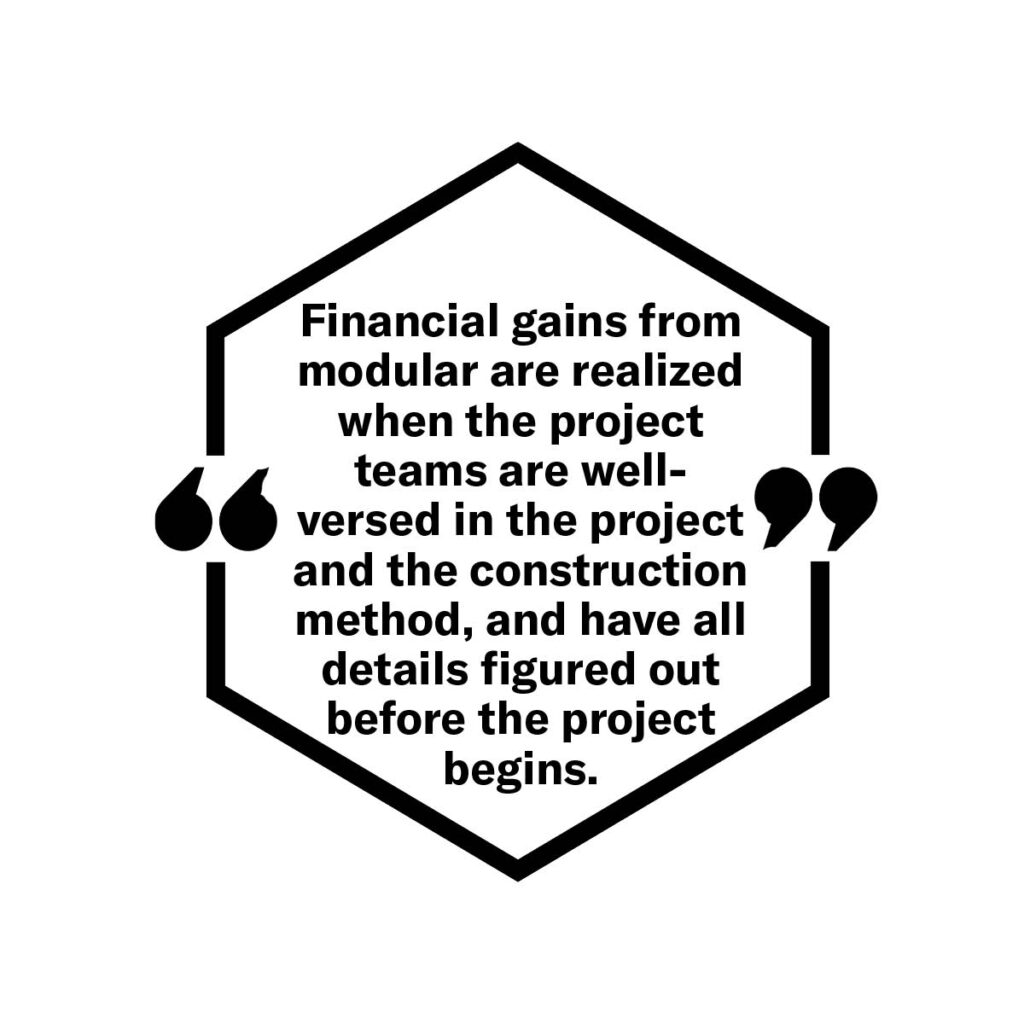
Savings Aren’t Automatic
While opting for modular does make for a faster construction process, which could lead to monetary savings, that revenue doesn’t come from simply choosing modular, notes Anthony Gude, Director of Real Estate Development at Leap of Faith Partners in Los Angeles, Calif.
His point is that the savings don’t happen by themselves. Rather, as is true for any method of building, they require good management. Financial gains from modular are realized when the project teams are well-versed in the project and the construction method, and have all details figured out before the project begins.
For example, rapidly built properties are great for getting revenue sooner, but in order to achieve that speed advantage, the site must be ready for the modules. “They have to be delivered to a site that’s fully permitted and approved,” Gude says.
Getting that done obviously demands a skilled GC, but it also requires a good development team. “There are certain decisions — regarding where site conditions, design, permitting and constructability overlap — that can only happen in real-time,” says Gude. “Those decisions can only be made at the development level and often, no single consultant has the answer.”
To maximize modular’s advantages, teams also need to be trained to work with the factory’s specific capabilities, which include design, engineering and production capabilities. (For instance, before creating project plans and timetables, teams need to know what the factory can deliver and when, as well as what on-site module storage, if any, will be needed.)
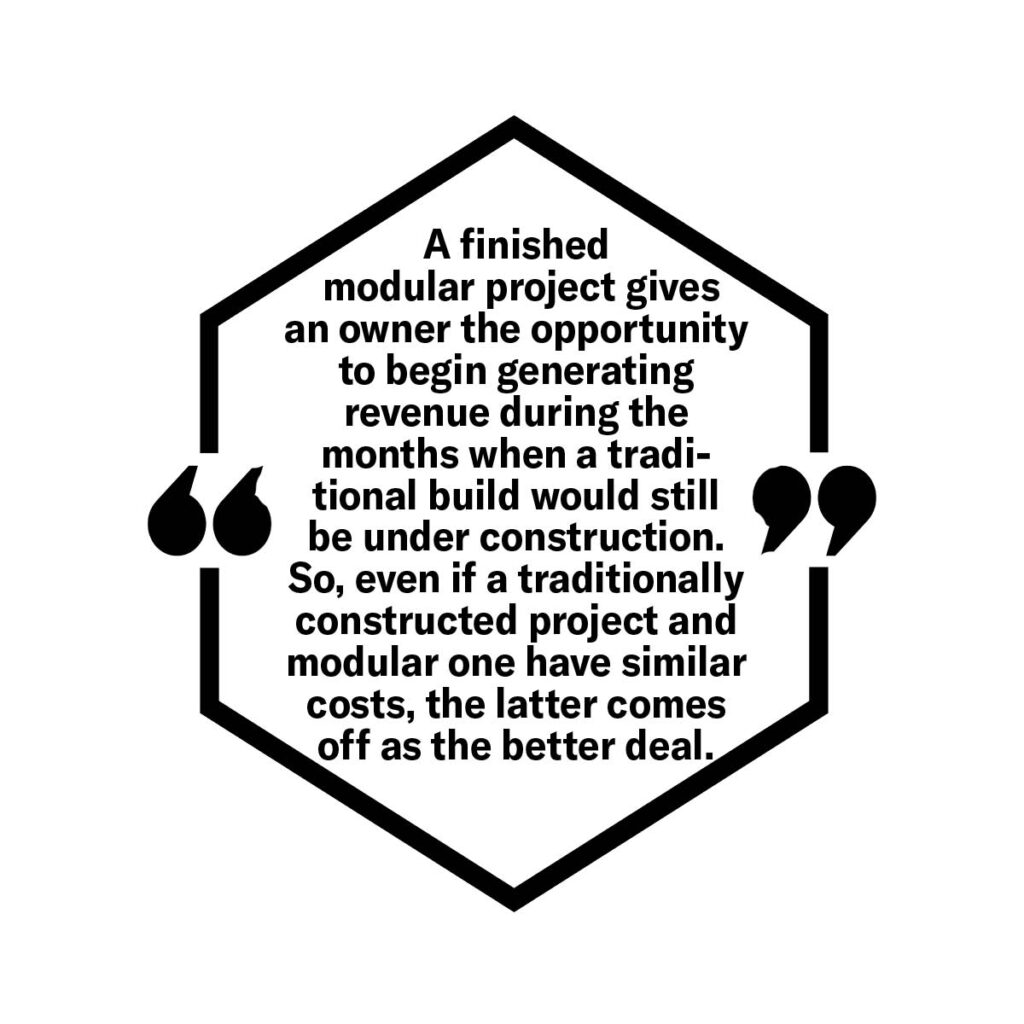
Modular restrictions also need to be considered early on, perhaps even before the GC is on board. Once the local and state permitting processes begin, it’s critical that they happen in parallel to guarantee that they’re finished at the same time. The successful handing of these details relies upon owner engagement and understanding.
“The fact that you can build the mods faster is not going to translate to a total project acceleration unless the project owners know what they’re doing, have prepared the modular time track and have put experienced managers in place,” Gude says.
In fact, as part of their due diligence, lenders will investigate whether the owners have a capable and experienced team.
“You will only get an accelerated project timetable if your team knows how to work within an accelerated project environment,” says Gude. “The economics of projects get better if the team has experience. Lenders will be a lot less resistant if your team has the track record of building in an accelerated fashion.”
Joe Dyton has been a professional writer since 1999. His work has appeared in Connected Real Estate Magazine, American Builders Quarterly, USA Today, Credit Karma and U.S. News & World Report.
